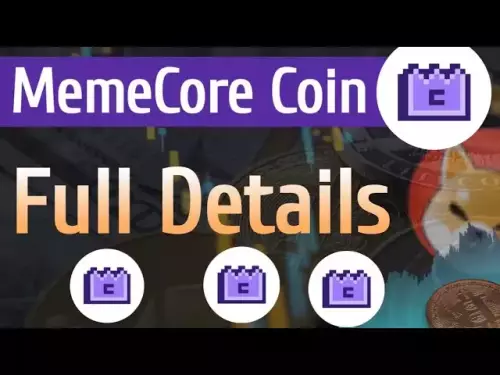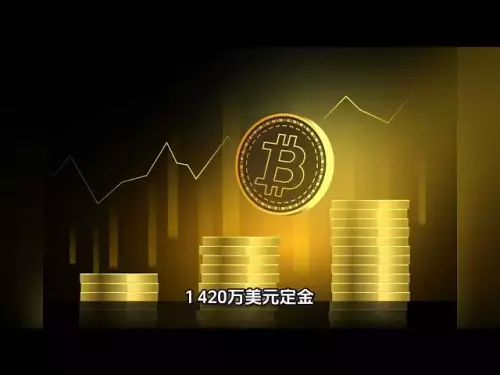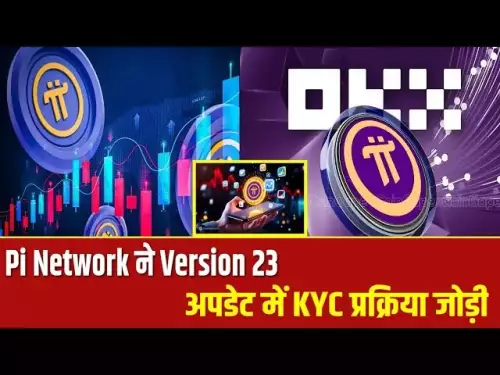-
 Bitcoin
Bitcoin $111200
0.44% -
 Ethereum
Ethereum $4302
0.12% -
 XRP
XRP $2.835
0.93% -
 Tether USDt
Tether USDt $1.000
0.06% -
 BNB
BNB $870.9
1.41% -
 Solana
Solana $203.8
0.29% -
 USDC
USDC $0.9999
0.03% -
 Dogecoin
Dogecoin $0.2178
1.53% -
 TRON
TRON $0.3284
-0.90% -
 Cardano
Cardano $0.8288
0.92% -
 Hyperliquid
Hyperliquid $47.24
1.45% -
 Chainlink
Chainlink $22.34
0.67% -
 Ethena USDe
Ethena USDe $1.001
0.05% -
 Sui
Sui $3.391
1.19% -
 Bitcoin Cash
Bitcoin Cash $598.8
-2.18% -
 Stellar
Stellar $0.3581
0.37% -
 Avalanche
Avalanche $24.59
1.88% -
 Hedera
Hedera $0.2199
1.96% -
 Cronos
Cronos $0.2631
-2.42% -
 UNUS SED LEO
UNUS SED LEO $9.490
-0.66% -
 Litecoin
Litecoin $114.0
2.18% -
 Toncoin
Toncoin $3.090
0.86% -
 Shiba Inu
Shiba Inu $0.00001237
0.84% -
 Polkadot
Polkadot $3.859
1.53% -
 World Liberty Financial
World Liberty Financial $0.2393
25.43% -
 Uniswap
Uniswap $9.388
1.32% -
 Dai
Dai $0.9999
0.02% -
 Ethena
Ethena $0.7417
-0.13% -
 Monero
Monero $269.7
-0.63% -
 Aave
Aave $301.5
0.20%
How to check if an address is a smart contract
Smart contracts have executable code, while wallet addresses don’t—always verify an address’s type on a blockchain explorer to avoid irreversible fund loss.
Sep 07, 2025 at 08:54 am
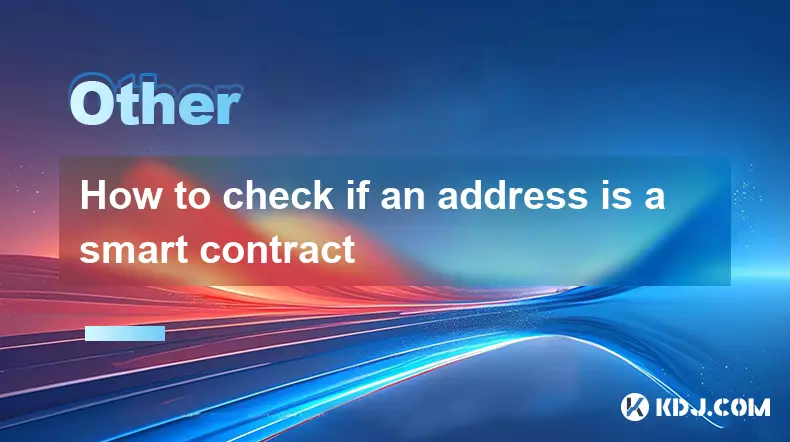
Understanding Smart Contracts and Wallet Addresses
1. Blockchain networks like Ethereum differentiate between externally owned accounts (EOAs) and contract accounts. EOAs are controlled by private keys and typically represent individual users. Contract accounts are governed by code and activated when transactions are sent to them.
2. A smart contract address is generated when a contract is deployed on the blockchain. Unlike EOAs, these addresses contain executable code that defines their behavior. Identifying whether an address is a contract helps users avoid sending funds incorrectly or interacting with malicious code.
3. One of the most reliable ways to determine if an address hosts a smart contract is by checking if it has bytecode associated with it. If the address returns non-empty bytecode when queried, it is a contract.
4. Wallet addresses, in contrast, do not contain any code. They simply receive and send transactions. When you inspect such an address on a blockchain explorer, the 'Contract' field will either be blank or marked as not a contract.
5. Misidentifying a contract as a wallet can lead to irreversible losses. For example, sending tokens to a contract that lacks a deposit function may result in permanent loss of funds.
Using Blockchain Explorers to Verify Contract Status
1. Platforms like Etherscan (for Ethereum), BscScan (for Binance Smart Chain), or PolygonScan allow users to paste any address into the search bar. If the address belongs to a smart contract, the page will display tabs such as 'Contract,' 'Read Contract,' and 'Write Contract.'
2. When a contract is verified, the source code, ABI, and compiler version are often publicly available on these platforms. This transparency helps developers and users understand the functionality and security of the contract.
3. If the address is a regular wallet, the explorer will show transaction history, token holdings, and internal transactions, but no contract-related tabs will appear.
4. Some explorers explicitly label the address type. For example, Etherscan displays a small tag next to the address name indicating 'Contract' or 'EOA.'
5. Users can also check the 'Code' section of an address. If it reads 'This account has no contracts,' it is not a smart contract. If bytecode is present, it confirms the presence of a contract.
Leveraging Web3 Tools and Libraries
1. Developers can use Web3.js or Ethers.js to programmatically determine if an address is a contract. In Web3.js, the method web3.eth.getCode(address) retrieves the bytecode at the specified address.
2. If the returned value is '0x' or '0x0', the address is likely an externally owned account. Any other value indicates the presence of contract code.
3. In Ethers.js, the equivalent function is provider.getCode(address). It returns a promise that resolves to the bytecode. This approach is useful for dApps that need to validate addresses before allowing interactions.
4. Scripts can be written to batch-check multiple addresses. This is particularly useful for auditors or services that analyze large volumes of on-chain data.
5. Caution must be exercised when interacting with unverified contracts. Even if an address has code, the absence of verified source code makes it difficult to assess its behavior and trustworthiness.
Common Pitfalls and Security Considerations
1. Some malicious actors deploy contracts that mimic well-known token addresses. Users might assume they are sending funds to a wallet when they are actually interacting with a contract designed to steal assets.
2. Proxy contracts can complicate identification. They often appear as contracts but delegate logic to an implementation contract. The bytecode at the proxy address may not reflect the actual functionality.
3. Never send funds to an address without verifying its type and purpose, especially if it's provided by an untrusted source. Even verified contracts can have vulnerabilities or malicious intent.
4. Scammers sometimes use contract addresses that auto-return small amounts to build trust. These are known as 'honeypot' contracts and are designed to lure victims into sending larger amounts.
5. Always cross-reference contract addresses with official project websites or community channels. Reputable projects usually publish their contract addresses with verification status.
Frequently Asked Questions
Can a smart contract receive native cryptocurrency like ETH?Yes, smart contracts can receive ETH or other native tokens if they have a payable fallback function. However, without such a function, sending ETH directly will fail or get stuck.
Is it possible for a contract to have no code but still be a contract?No. A contract must have bytecode deployed on-chain. If getCode returns '0x', it is not a contract. Self-destructed contracts may leave an address with no code but are no longer functional.
What does it mean if an address has code but no transaction history?It could be a newly deployed contract that hasn't been interacted with yet. Alternatively, it might be a dormant or scam contract waiting for victims to engage.
Do all blockchains handle contract addresses the same way?Most EVM-compatible chains follow Ethereum's model. However, non-EVM chains like Solana or Cosmos use different account models, so the methods for checking contract status vary by network.
Disclaimer:info@kdj.com
The information provided is not trading advice. kdj.com does not assume any responsibility for any investments made based on the information provided in this article. Cryptocurrencies are highly volatile and it is highly recommended that you invest with caution after thorough research!
If you believe that the content used on this website infringes your copyright, please contact us immediately (info@kdj.com) and we will delete it promptly.
- Dogecoin, Shiba Inu, and the Crypto Forecast: Beyond the Meme
- 2025-09-07 20:25:11
- TRON (TRX) Treasury Expansion: Is It Enough to Spark a Price Surge?
- 2025-09-07 21:05:13
- Pi Network, Rollblock, and the 2025 Path: A Crypto Crossroads
- 2025-09-07 20:45:28
- Bitcoin Price Prediction vs. Remittix: Navigating the Crypto Landscape
- 2025-09-07 21:25:15
- Crypto Coins, Binance, and Bonus Offers: What's the Hype?
- 2025-09-07 21:25:15
- XRP's Wild Ride: China's DeepSeek AI, ETF Hopes, and Market Realities
- 2025-09-07 21:45:11
Related knowledge

How to check if an address is a smart contract
Sep 07,2025 at 08:54am
Understanding Smart Contracts and Wallet Addresses1. Blockchain networks like Ethereum differentiate between externally owned accounts (EOAs) and cont...
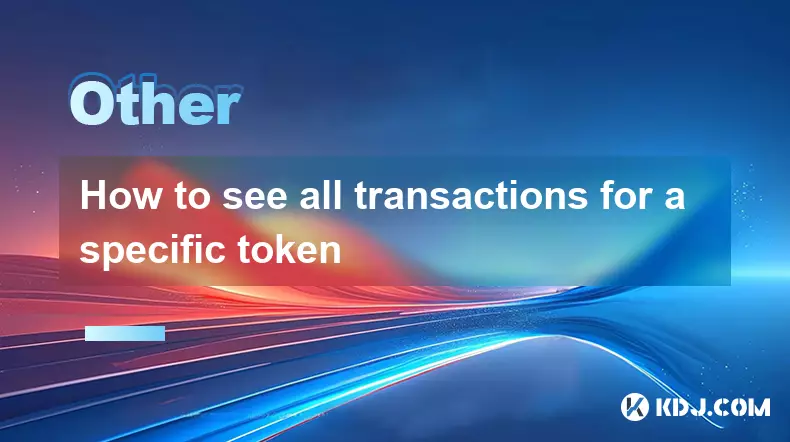
How to see all transactions for a specific token
Sep 05,2025 at 08:36am
Understanding Token Transactions on the Blockchain1. Every token transaction on a blockchain is recorded as part of a public ledger, making it accessi...

How to find the block height of a transaction
Sep 04,2025 at 08:37pm
Understanding Block Height in Blockchain Transactions1. Block height refers to the number of blocks that have been confirmed on the blockchain since i...
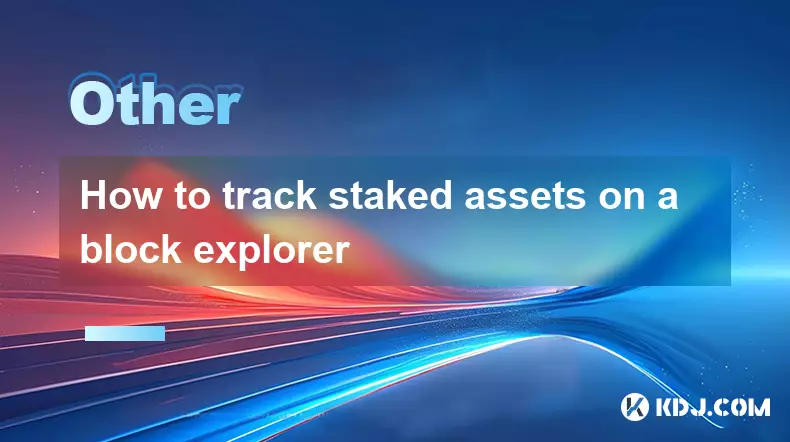
How to track staked assets on a block explorer
Sep 05,2025 at 04:18am
Understanding Staked Assets on the Blockchain1. Staked assets refer to cryptocurrency tokens locked in a smart contract or validator node to support n...
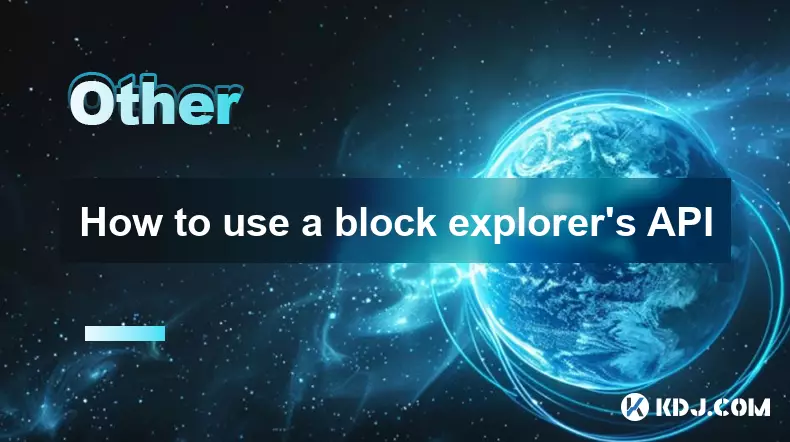
How to use a block explorer's API
Sep 07,2025 at 01:19am
Understanding the Basics of Block Explorer APIs1. A block explorer API allows developers to access blockchain data programmatically. This includes tra...
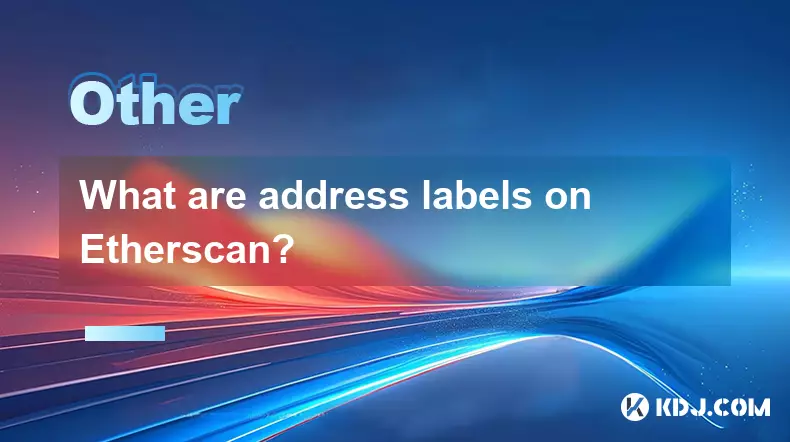
What are address labels on Etherscan?
Sep 07,2025 at 02:37pm
Understanding Address Labels on Etherscan1. Address labels on Etherscan are user-assigned or system-generated names attached to Ethereum addresses to ...

How to check if an address is a smart contract
Sep 07,2025 at 08:54am
Understanding Smart Contracts and Wallet Addresses1. Blockchain networks like Ethereum differentiate between externally owned accounts (EOAs) and cont...

How to see all transactions for a specific token
Sep 05,2025 at 08:36am
Understanding Token Transactions on the Blockchain1. Every token transaction on a blockchain is recorded as part of a public ledger, making it accessi...

How to find the block height of a transaction
Sep 04,2025 at 08:37pm
Understanding Block Height in Blockchain Transactions1. Block height refers to the number of blocks that have been confirmed on the blockchain since i...

How to track staked assets on a block explorer
Sep 05,2025 at 04:18am
Understanding Staked Assets on the Blockchain1. Staked assets refer to cryptocurrency tokens locked in a smart contract or validator node to support n...

How to use a block explorer's API
Sep 07,2025 at 01:19am
Understanding the Basics of Block Explorer APIs1. A block explorer API allows developers to access blockchain data programmatically. This includes tra...

What are address labels on Etherscan?
Sep 07,2025 at 02:37pm
Understanding Address Labels on Etherscan1. Address labels on Etherscan are user-assigned or system-generated names attached to Ethereum addresses to ...
See all articles





















